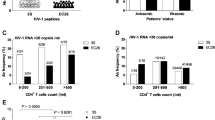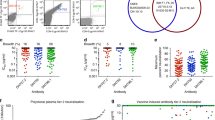Abstract
Characterization of antibodies targeting the attachment and entry of the viral particles into host cells is important for studding antibody mediated neutralization. Antibodies against the envelope glycoproteins (EGP) have neutralizing capacity and can prevent HCV infections. System based on HCV pseudo typed-particles (HCVpp) stably expressing EGP can be used for screening of HCV anti envelope neutralizing antibodies in the serum of patients with acute and chronic HCV infections. The aim of the current study was to check HCVpp as a useful tool for the detection of anti-HCV envelope antibodies in the serum of HCV infected patients and to test the binding potential of these antiviral molecules to EGP of HCV 3a. Previously developed HCVpp harboring unmodified glycoproteins from local isolates in 293T cell line were used in this study. HCVpp were pre incubated with different concentrations of anti E1 antibody and different E2 antibodies to check antiviral activity. Further we used serum samples with low/medium (≤800,000 IU/mL), and high (>800,000 IU/mL) viral titer from chronic HCV male and female patients. Infection was done in Huh-7 cells for 1 h at 37 oC. Infectivity was checked through Luciferase assay. Considerable decrease in HCVpp infectivity with anti-envelope antibodies was observed in dose dependent manner. Maximum inhibition was seen when 5 µg/ml of monoclonal anti E1 antibody used. Further increase in concentration exhibited no decrease in infectivity which suggests that other factors are also involved in causing infection. Various well characterized E2-specific monoclonal antibodies (mAbs) have been screened for their capability to reduce infection in Huh-7 cells. Three of the four mAbs specific for the E2 had no effect on the infectivity of HCVpp. Confirmation sensitive antibody H53 showed maximum inhibition of infectivity. HCV ELISA positive samples from both male and female patients were used to neutralize the HCVpp. The neutralizing antibody response was observed in both males and females patients and do not assemble the rapidly evolving HCV envelope glycoproteins. That is why in spite the presence of neutralizing antibodies in the blood they fail to resolve infections. Moreover E1 antibodies insignificantly (>0.05) inhibit HCVpp infectivity while E2 antibodies significantly (<0.05) inhibit HCVpp infection. Based on the results of this study it is concluded that anti-envelope antibodies particularly the anti-E2 could be extremely valuable for characterizing the humoral immune response to HCV and for evaluating the potential for developing passive and active immunization for hepatitis C along with interferon therapy.




Similar content being viewed by others
References
Forns X, Allander T, Rohwer-Nutter P, Bukh J (2000) Characterization of modified hepatitis C virus E2 proteins expressed on the cell surface. Virology 274(1):75–85
Goffard A, Callens N, Bartosch B, Wychowski C, Cosset FL, Montpellier C, Dubuisson J (2005) Role of N-linked glycans in the functions of hepatitis C virus envelope glycoproteins. J Virol 79(13):8400–8409
Op DB, Voisset C, Bartosch B, Ciczora Y, Cocquerel L, Keck Z, Foung S, Cosset FL, Dubuisson J (2004) Characterization of functional hepatitis C virus envelope glycoproteins. J Virol 78(6):2994–3002
Zibert A, Schreier E, Roggendorf M (1995) Antibodies in human sera specific to hypervariable region 1 of hepatitis C virus can block viral attachment. Virology 2008(2):653–661
Germi R, Crance JM, Garin D, Zarski JP, Drouet E (2001) Receptors for hepatitis C virus: update data]. Gastroenterol Clin Biol 25(11):1011–1015
Choo QL, Kuo G, Ralston R, Weiner A, Chien D, Van Nest G, Han J, Berger K, Thudium K, Kuo C (1994) Vaccination of chimpanzees against infection by the hepatitis C virus. Proc Natl Acad Sci USA 91(4):1294–1298
Dash S, Kalkeri G, McClure HM, Garry RF, Clejan S, Thung SN, Murthy KK (2001) Transmission of HCV to a chimpanzee using virus particles produced in an RNA-transfected HepG2 cell culture. J Med Virol 65(2):276–281
Rosa D, Campagnoli S, Moretto C, Guenzi E, Cousens L, Chin M, Dong C, Weiner AJ, Lau JY, Choo QL, Chien D, Pileri P, Houghton M, Abrignani S (1996) A quantitative test to estimate neutralizing antibodies to the hepatitis C virus: cytofluorimetric assessment of envelope glycoprotein 2 binding to target cells. Proc.Natl.Acad.Sci.U.S.A 93(5):1759–1763
Cocquerel L, Quinn ER, Flint M, Hadlock KG, Foung SK, Levy S (2003) Recognition of native hepatitis C virus E1E2 heterodimers by a human monoclonal antibody. J Virol 77(2):1604–1609
Thompson SC, Hernberger F, Wale E, Crofts N (1996) Hepatitis C transmission `through tattooing: a case report. Aust.N.Z.J. Public Health. 20(3):317–318
Bartosch B, Dubuisson J, Cosset FL (2003) Infectious hepatitis C virus pseudo-particles containing functional E1-E2 envelope protein complexes. J Exp Med 197(5):633–642
Drummer HE, Wilson KA, Poumbourios P (2002) Identification of the hepatitis C virus E2 glycoprotein binding site on the large extracellular loop of CD81. J Virol 76(21):11143–11147
Hsu M, Zhang J, Flint M, Logvinoff C, Cheng-Mayer C, Rice CM, McKeating JA (2003) Hepatitis C virus glycoproteins mediate pH-dependent cell entry of pseudotyped retroviral particles. Proc.Natl.Acad.Sci.U.S.A. 100(12):7271–7276
Bartosch B, Cosset FL (2009) Studying HCV cell entry with HCV pseudoparticles (HCVpp). Methods Mol Biol 510:279–293
Bartenschlager R (2006) Hepatitis C virus molecular clones: from cDNA to infectious virus particles in cell culture. Curr Opin Microbiol 9(4):416–422
Haberstroh A, Schnober EK, Zeisel MB, Carolla P, Barth H, Blum HE, Cosset FL, Koutsoudakis G, Bartenschlager R, Union A, Depla E, Owsianka A, Patel AH, Schuster C, Stoll-Keller F, Doffoel M, Dreux M, Baumert TF (2008) Neutralizing host responses in hepatitis C virus infection target viral entry at postbinding steps and membrane fusion. Gastroenterology 135(5):1719–1728
Cocquerel L, Wychowski C, Minner F, Penin F, Dubuisson J (2000) Charged residues in the transmembrane domains of hepatitis C virus glycoproteins play a major role in the processing, subcellular localization, and assembly of these envelope proteins. J Virol 74(8):3623–3633
Lanford RE, Bigger C, Bassett S, Klimpel G (2001) The chimpanzee model of hepatitis C virus infections. ILAR.J. 42(2):117–126
Cocquerel L, Quinn ER, Flint M, Hadlock KG, Foung SK, Levy S (2003) Recognition of native hepatitis C virus E1E2 heterodimers by a human monoclonal antibody. J Virol 77(2):1604–1609
Herring BL, Tsui R, Peddada L, Busch M, Delwart EL (2005) Wide range of quasispecies diversity during primary hepatitis C virus infection. J Virol 79(7):4340–4346
Hahn JA (2007) Sex, drugs and hepatitis C virus. J Infect Dis 195(11):1556–1559
Klasse PJ, Sattentau QJ (2002) Occupancy and mechanism in antibody-mediated neutralization of animal viruses. J Gen Virol 83(Pt 9):2091–2108
Berger A, Giroglou T, Leutz A, Ogbomo H, Pfaff K, Teuber G, Cinatl J, van Laer D, Doerr HW (2009) Measurements of HCV neutralizing antibodies and of HCV-specific CD4+ and CD8+ cells using hepatitis C virus pseudo-particles (HCVpp). J Clin Virol 46(1):55–60
Farci P, Shimoda A, Coiana A, Diaz G, Peddis G, Melpolder JC, Strazzera A, Chien DY, Munoz SJ, Balestrieri A, Purcell RH, Alter HJ (2000) The outcome of acute hepatitis C predicted by the evolution of the viral quasispecies. Science 288(5464):339–344
Author information
Authors and Affiliations
Corresponding author
Rights and permissions
About this article
Cite this article
Rafique, S., Idrees, M., Ali, A. et al. Studies on the role of neutralizing antibodies against envelope genes in resolving HCV pseudo-particles infection. Mol Biol Rep 41, 3945–3950 (2014). https://doi.org/10.1007/s11033-014-3262-y
Received:
Accepted:
Published:
Issue Date:
DOI: https://doi.org/10.1007/s11033-014-3262-y




